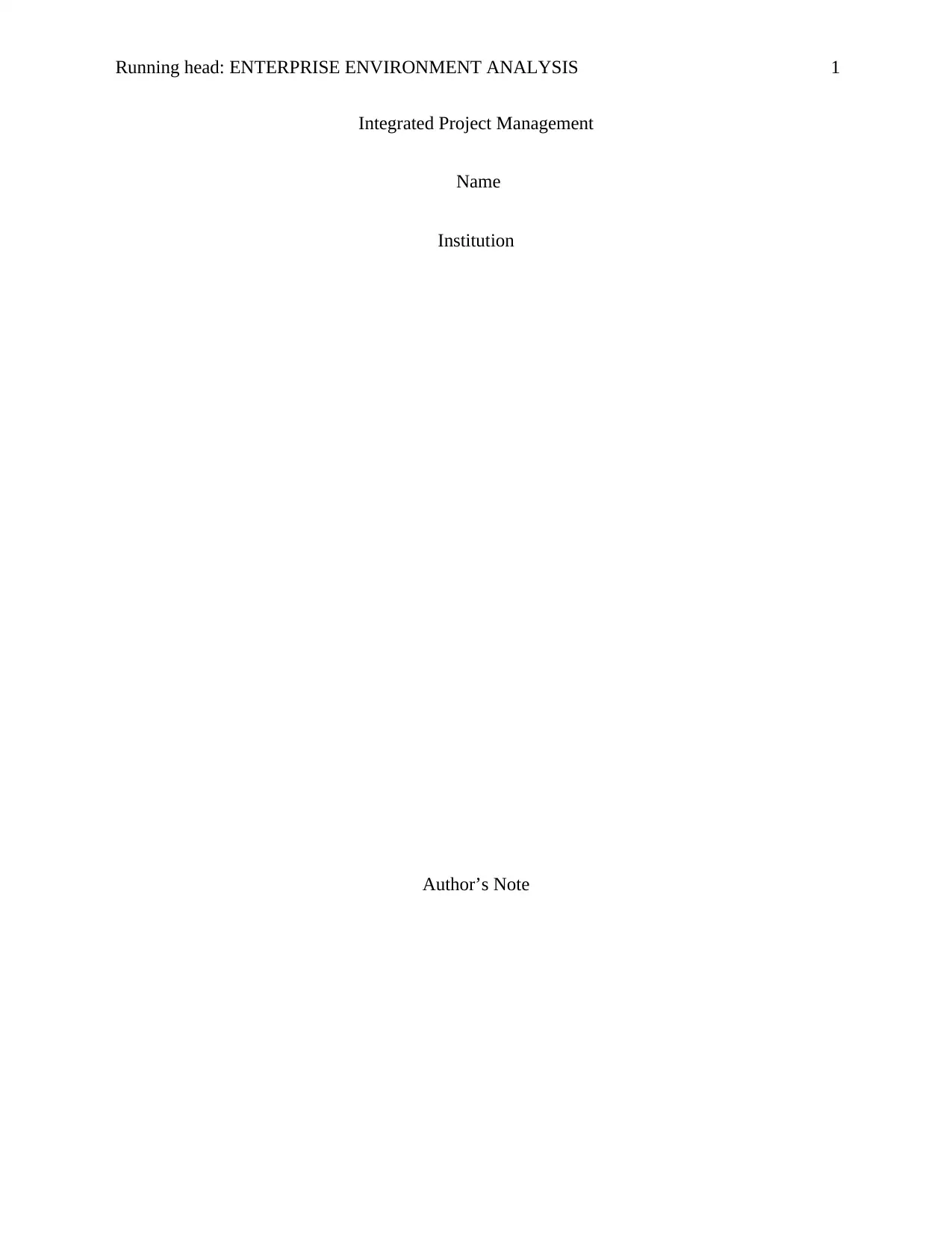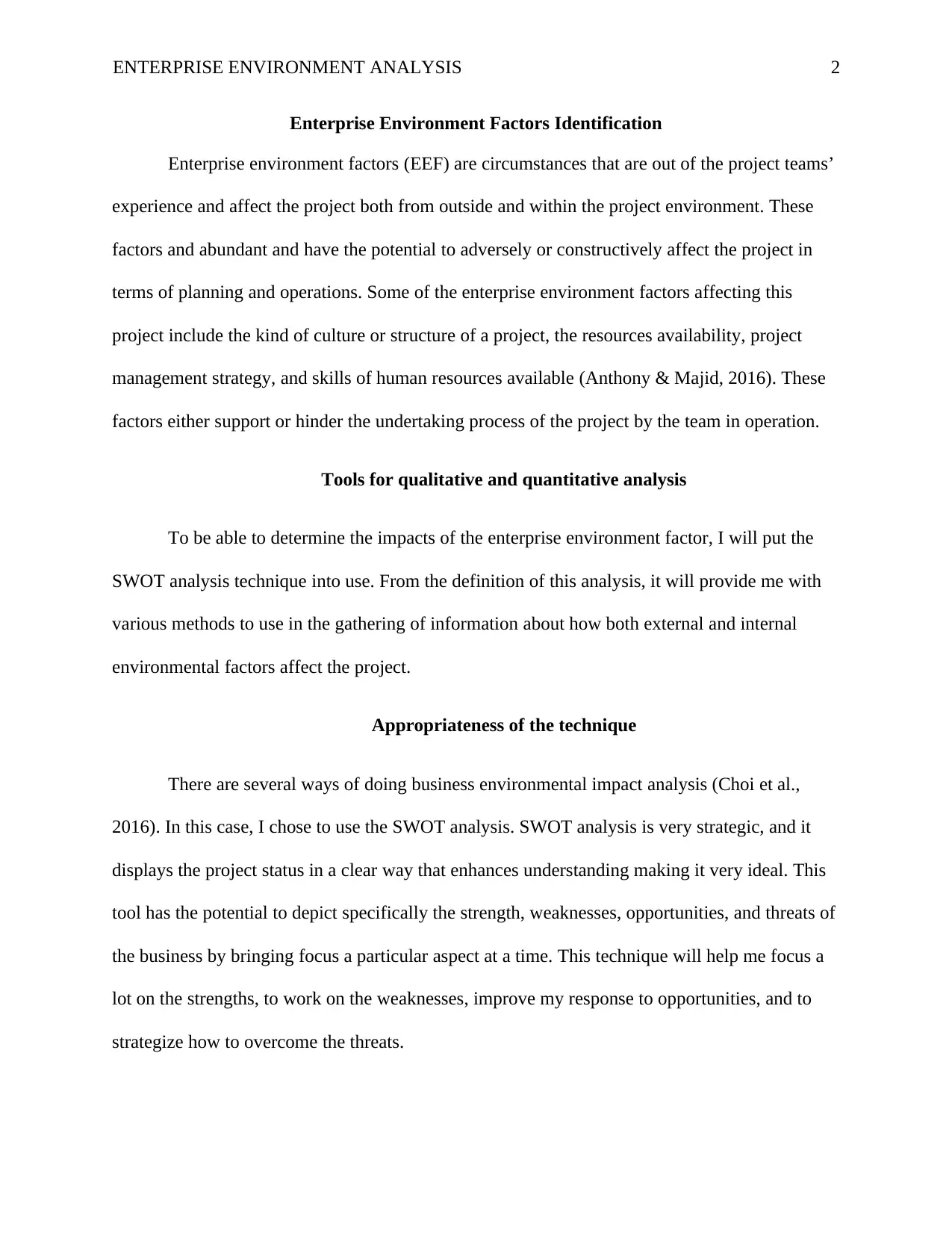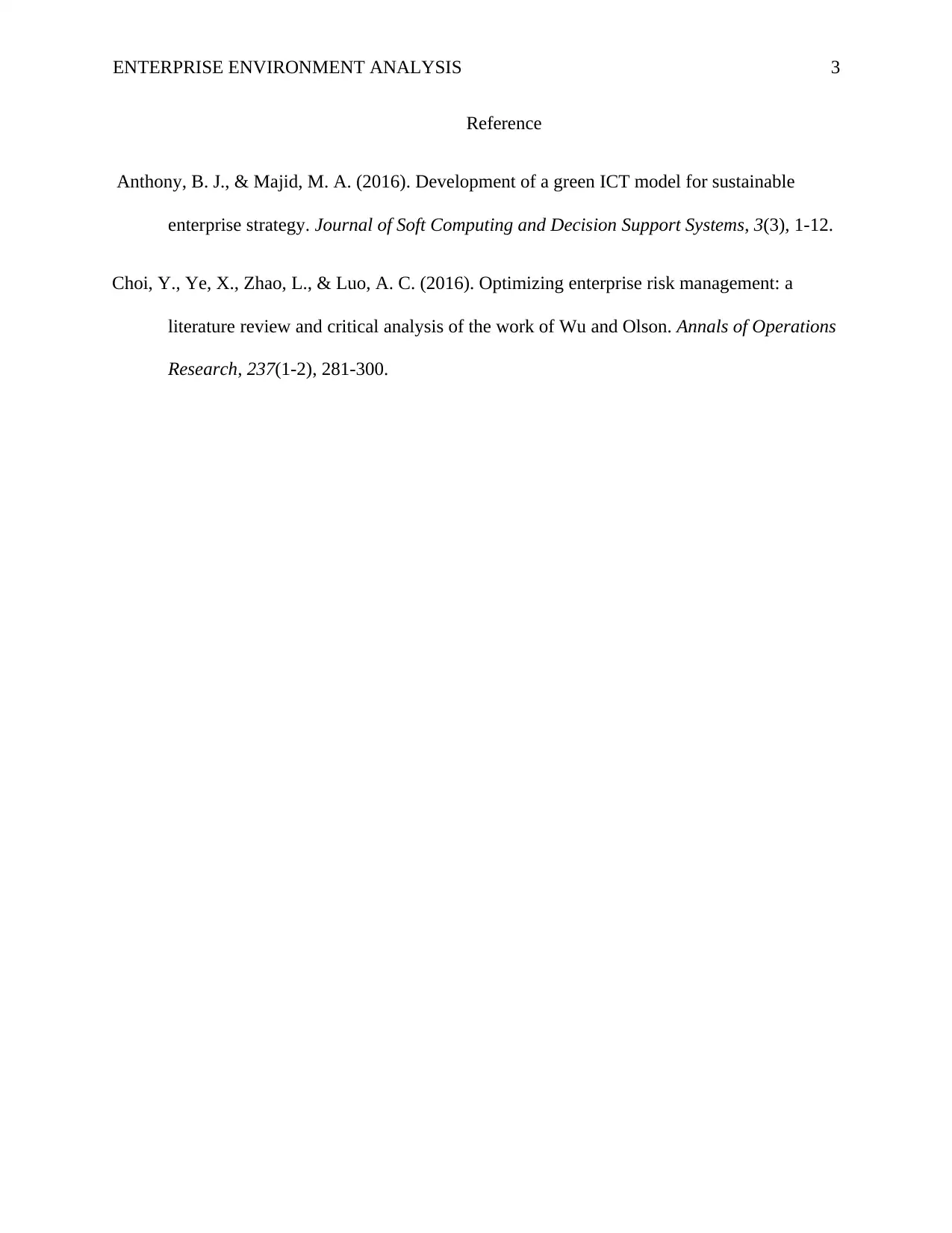PROJ6001: Integrated Project Management - EEF Analysis Report
VerifiedAdded on 2022/09/21
|3
|414
|20
Report
AI Summary
This report analyzes Enterprise Environment Factors (EEF) and their impact on project management processes. The assignment uses SWOT analysis to identify and evaluate the influence of external and internal environmental factors, such as organizational culture, resource availability, and project management strategies, on project outcomes. The analysis aims to determine how these factors can either support or hinder project success. The report also discusses the appropriateness of SWOT analysis as a strategic tool for assessing strengths, weaknesses, opportunities, and threats within a project context. The provided solution offers a comprehensive understanding of EEF and their significance in project management, including their impact on planning and operations and the importance of effective management for project success. The report also includes references to relevant literature supporting the analysis.
1 out of 3










![[object Object]](/_next/static/media/star-bottom.7253800d.svg)